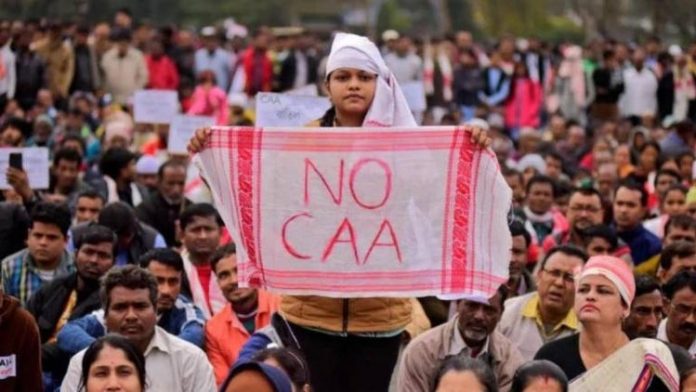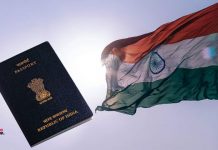This article is written by Mahima Sharma, pursuing LLB from Symbiosis Law School, Pune. The author under the article has delved into the concept of inner-line permit (ILP) and how it is a matter of concern in the state of Assam.
Table of Contents
Introduction
Hundreds of thousands of people around the country have been protesting against the Citizenship (Amendment) Act, 2019 (CAA), and the proposed National Register of Citizens (NRC). Since the coming into effect of the CAA, there have been major movements in the North-Eastern States against the proposed Citizenship Act, upon which the Center declared that the Act will not extend to the Inner-line permit (ILP) system of states and areas ruled by the Sixth Schedule of the Constitution. Under the Sixth Schedule of the Constitution, democratic councils and districts have been formed in some tribal areas of Assam, Meghalaya, and Tripura. The independent councils and constituencies have certain legislative and executive powers. In Assam, Karbi Anglong, Dima Haso, and Bodoland are protected under the Sixth Schedule. They, however, make only seven out of 33 Assam districts, Which blows the fear of immigration of illegal migrants from Bangladesh, that the state is facing since its very history. People of Assam have always been requesting For ILP system to be applied in the whole state to protect the state from the settlement of illegal immigrants, However, the government has now and then refused the proposal of the ILP system believing that it would lead to a heavy struggle of unemployment and economic growth in Assam.
What is an inner line permit
Inner Line Permit is an official document provided by the state government which enables Indian citizens to commute to the state under the IPL for a specific period of time. It is mandatory for residents from outside certain States as well as for foreigners to request a permit to enter a secured state. However, the employees of the central government and security personnel are exempted to enter the state without the ILP document.
Currently, permits are necessary for states such as Manipur, Nagaland, Arunachal Pradesh, and Mizoram. This system is used in India to protect tribal populations in the Northeast and for the government to control and track movements of specific areas along the international border of India. People can get this document accessible online or in person. Permits given are in various forms and are granted separately to visitors, tenants, and other reasons for a particular period of time.
Under the inner line permit system, outsiders from other states cannot purchase property in these northeastern states for any use, and for the resident of the state, it imposes certain terms and conditions to buy the property.
The ILP rule is valid under the Bengal Eastern Frontier Regulations (BEFR), 1873. As regards Section 2 of BEFR 1873, residents of other states require the ILP to enter Arunachal Pradesh, Nagaland, and Mizoram. The primary goal of the ILP system is to minimize the settlement in these three states of other Indian nationals in order to safeguard the indigenous people.
How did it come into existence
Inner line permit system was introduced during the British period to protect their interest and forces from the tribals of laundering hills, who used to invade the British regulated area, in turn, creating insecurity in neighbouring hills. Hence, to protect the interest of both the parties an imaginary line was created which was called Inner-line so neither party can go beyond the line without permission from the proper authority.
In 1850 British Rulers had serious concerns over the eastern frontiers of Bengal as the condition of the area was pathetic. The hill tribes of these regions used to be in a constant fight with the British subject of tea and rubber Planters. Hence to keep the area from inference, Bengal Eastern frontier Regulation, 1873 was enacted which regulated the concept of the inner line system.
After Independence, in 1950, the word British subject was replaced with a citizen of India.
And the earlier regime of the ban on free movement was described as a system to protect the tribal culture of the northeastern State.
Why was the inner line permit created
The document is an attempt by the Government to control the movement of individuals to some areas situated near the international border of India.
- Protecting the indigenous communities of these nations.
- Minimizing the likelihood of any unsavoury accident.
- Allowing enough time to grow these states economically without any outside intervention.
- Purpose of security.
Where do we Need ILP in India
The ILP currently applies to:
- Sensitive regions adjoining to international borders for the protection of national security and
- Many such distant parts of the country as a way of securing the native culture and interests of indigenous peoples by applying excessive restrictions on the upsurge of outsiders and their ability to purchase and/or live permanently in these regions.
Although one can still travel to these places, one must prepare ahead and claim for an ILP before travelling through. Suffice to say, PIOs/NRIs/OICs & Foreign Nationals also need permission to visit these regions. Nevertheless, they can not apply for an ILP; conversely, they need to apply for a Protected Area Permit (or a Restricted Area Permit based on the categorization assigned to the Protected Area).
In addition, such areas may have certain other constraints in terms of not being open to non-Indian citizens or necessitating groups of individuals to commute together by dissuading permits for individual travellers, among many others. Therefore, when planning a trip to any of these areas, it may be worth a while to engage the services of a reputable, registered, local tour guide to help apply for re-entry.
Here’s a quick look at some of the states in India that require an ILP:
Protected Areas are:
1- Manipur (Partially): Includes the well-known Loktak Lake, Waithe Lake Kongjam War Memorial, Moirang INA Memorial, Keibul Deer Sanctuary & Imphal
2- Mizoram (Partially): Includes Vairangte, Thingdawl & Aizawl
3- Arunachal Pradesh (Partially): Includes Itanagar, Pasighat, Ziro, Namdapha, Along, and Miao.
4- Nagaland (Whole State): Required by non-Nagas who are travelling beyond Dimapur. Most of all of the State is a protected area including the Dimapur District, Kohima District, Mokochong & Wokha Districts.
5- Uttaranchal (Partially): Includes areas adjoining the Milam Glacier, Nanda Devi Sanctuary, Uttar Kashi Districts & Kalindi Khal in Chamoli.
6- Jammu and Kashmir (Partially): In 2014, the requirement of procuring an ILP was suspended for Indian citizens and only foreign nationals were required to procure a permit.
However, with effect from June 2017, Indian citizens would need to get an ILP issued before visiting certain areas of the Ladakh region including the Nubra Valley (Khardung La, Khardung, Khalsar, Diskit, Hunder, Turtuk, Sumur, Takashi, Panamik and Warshi), Pangong Tso (Chang La, Durbuk, Tangtse, and Spangmik), Changthang Valley (Man, Merak, Chushul, Loma, Koyul, Hanle, Nyoma, Mahe, Sumdo), Phobrang and Marsimak La, Leh to Tso Moriri: Chumathang, Mahe, Sumdo, Karzok (Tso Moriri), Leh to Batalik: Khalsi, Damkhar, Skurbuchan, Dargoo, Hanoi, Dah, Batalik, Tangyar Trek: Leh – Saboo – Diggar La – Tangyar (Nubra Valley), Agham Shyok Route & Wari La.
Who issues the Inner Line permit
The state government issues the document of ILP. It can be accessed either online or directly from the government office. The ILP card outlines the dates of travel and also the particular areas in which the user of the ILP may travel.
Generally, ILPs are applicable for a week but can be extended if required. For the frequent visitor or labourers, they can request for the issue of special ILP from the respective state government.
How is it related to the citizenship amendment
The Citizenship (Amendment) Act, 2019, allows non-Muslim refugees (Hindus, Jains, Sikhs, Buddhists, Parsis, and Christians) from Pakistan, Bangladesh, and Afghanistan who came to the country until 31 December, 2014 to acquire Indian citizenship.
While the majority of mainland India is opposing the divisive Act for being anti-Muslim, the concern for the North East is very different. If the Act is enforced without the ILP, the claimants under the CAB will become Indian citizens and will be permitted to settle anywhere in the world. Nevertheless, the introduction of the ILP bars refugees from the settlement in the ILP System bearing States.
Concerns of the northeast state
Assam and Tripura have really been open in fighting against the Act since they connect the longest boundaries with Bangladesh and have been exposed to the maximum influx of Bengali-speaking illegal migrants since partitioning.
Assam has become a breeding ground of unrest since the 1970s. The state experienced a widespread uprising against illegal immigrants that started in 1979 and concluded with the Assam Agreement Accord in 1985. The Northeast is home for 238 indigenous communities, who make up 26% of the population of the area, and the leaders’ say that the continuing migration of Bengali-speaking refugees is disrupting their existence.
According to the various studies, the migration of international visitors has risen dramatically, causing a population disparity in the area. If that is not enough, illicit trafficking from Bangladesh, Nepal, and Myanmar has also led to the conflict. It has generated concern among locals regarding jobs and the availability of resources.
The North East Students’ Union, the umbrella body representing all student organizations, in particular, has consistently reinforced its request for the adoption of the Inner Line Permit (ILP) in all states of the country in order to prevent this.
Presidential order
An official release on 24 December, 2019 announced that the Union Cabinet had given its ex-post-facto approval to the 2019 Adaptation of Laws (Amendment) Order, issued by the President pursuant to Clause (2) of Article 372 of the Constitution amending the BEFR.
However, the Union of Students that this is done to impose CAA in Assam because under the BEFR, state of Assam is entitled to get an inner-line permit system and is under the framework of BEFR, but the centre amended the provision intentionally to impose CAA.
Petition challenging Presidential order
The Presidential Order was challenged by Asom Jatiyatabadi Yuba Chatra Parishad (AJYCP) and All Tai Ahom Student Union (ATASU) in the Supreme Court. The petitioners argued that the Presidential Order had excluded several of the districts of Assam from BEFR shortly before the granting of approval to the Citizenship (Amendment) Act (CAA), 2019.
The districts included Kamrup, Darrang, Nowgong, Sibsagar, Lakhimpur, and Cachar.
BEFR empowers some of the states to bring districts under the inner line area.
Once the districts had entered the ‘inside line’ section, the CAA could not be applied to the degree of granting citizenship to illegal immigrants in Assam in the light of Section 6B(4) of the CAA.
Section 6B(4) of the CAA limits the enforcement of the CAA to tribal areas as set out in the Sixth Schedule of the Constitution and to places protected by the Inner Line approved under the Bengal Eastern Frontier Regulation (1873).
The CAA relaxes the qualifying requirements for certain groups of migrants from three countries (Pakistan, Bangladesh, and Afghanistan) pursuing Indian citizenship and exempts other groups of regions, like those covered under the Inner Line scheme.
The State Government claims that the ILP can not be introduced in Assam, as Assam is the gateway to North-East India. The application of the ILP would raise the unemployment rate. The tea business and the oil sector would be impacted. According to the petitioner, BEFR could have been the solution to the problems of illegal immigrants that Assam and its people are facing today.
Supreme Court decision
On 3rd June 2020, the Supreme Court pursued a reaction from the Center on the pleas of two Assam Student Unions challenging the Presidential Order of repealing the Bengal Eastern Frontier Regulation (BEFR) of 1873 to deny the system of state inner-line permits (ILP) to remove it from the Citizenship Amendment Act ( CAA).
Chief Justice S. A. Bobde and Justices A. S. Bopanna and Hrishikesh Roy, who was conducting the hearing by video conferencing, also declined to issue ex-part stays on the execution of the presidential order.
The Supreme Court gave notice to the Center and referred the case to a further hearing after two weeks.
Conclusion
In the context of this complicated identity history and declaration and compromise politics, the country’s wider reporting of the anti-CAA stand has refused to acknowledge the convoluted layers of Assam’s lonely battle. It seems to have become a subject of communal politics, secularism, and has sometimes been simplified to an anti-Muslim rule, also concerns the cry of the Assam people for the development of their culture and identity.
References
- https://pib.gov.in/PressReleseDetailm.aspx?PRID=1595665
- https://assamaccord.assam.gov.in/portlets/assam-accord-and-its-clauses
LawSikho has created a telegram group for exchanging legal knowledge, referrals and various opportunities. You can click on this link and join:
 Serato DJ Crack 2025Serato DJ PRO Crack
Serato DJ Crack 2025Serato DJ PRO Crack










 Allow notifications
Allow notifications



